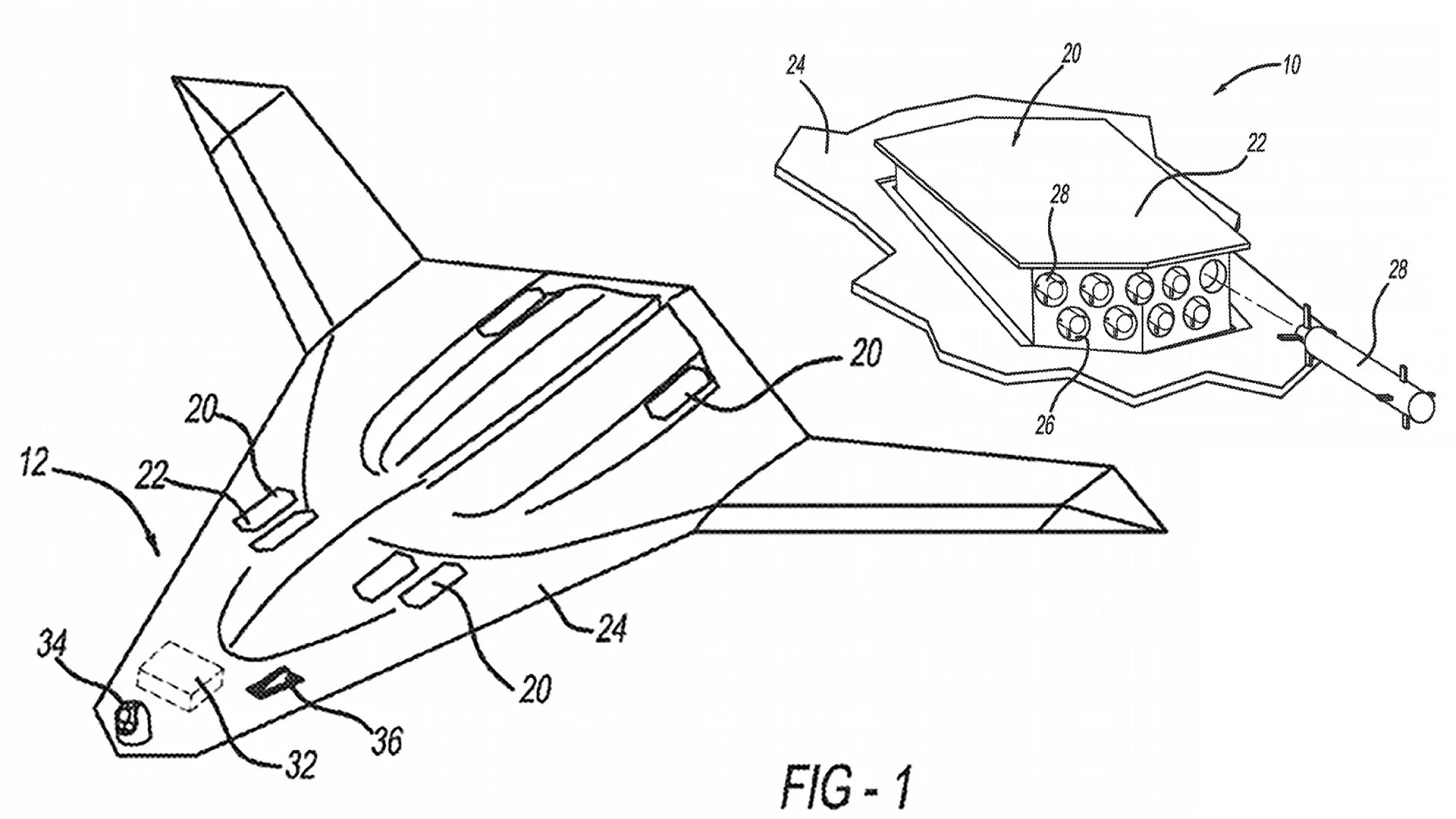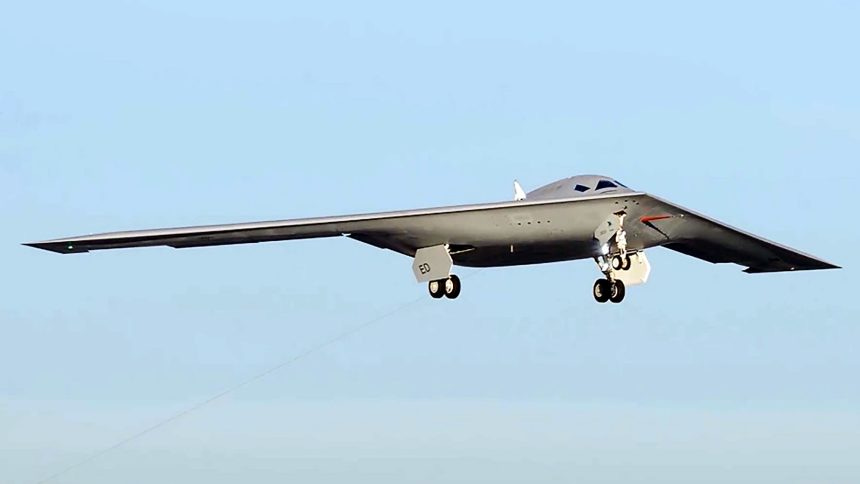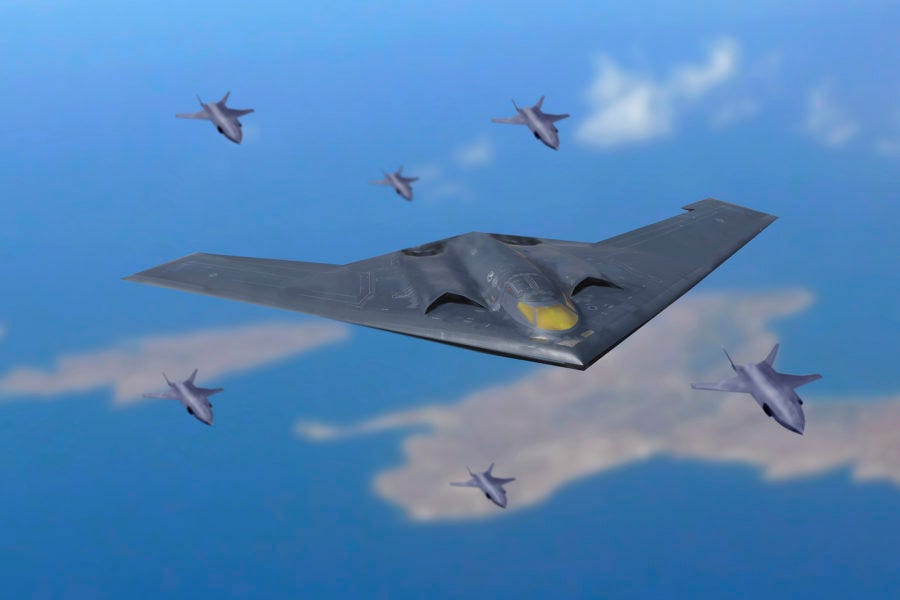What if Northrop Grumman’s B-21 Bomber replaced the F-22?
In this edition of The Engineer's Perspective, we look at the possibility of the B-21 taking on some of the NGAD's role of Air Superiority - And the answer may surprise you.
The Engineer's Perspective is a reader-supported publication. Sign and up and subscribe to see more in-depth Aerospace/Aeronautical Analysis!
Table of Contents:
Overview
Historical Development
Specifications
Concept of Operations
Systems Engineering Requirements
Implications and Future Considerations
Conclusion
References
Overview
The B-21 Raider, originally designed as a next-generation stealth bomber, is now being considered for an expanded role that could potentially encompass some of the missions intended for the Next Generation Air Dominance (NGAD) fighter program. This shift in strategy is primarily driven by cost concerns associated with the NGAD program and the need for a more integrated approach to air superiority. However, these developments, when taken into context with Northrop Grumman's patented kinetic missile defense system for stealth aircraft and the recent development of Collaborative Combat Aircraft (CCAs), further support the B-21's potential to take on this expanded role.
Context
The U.S. Air Force is currently reviewing its plans for the NGAD program, which aims to develop a 6th-generation fighter to replace the F-22 Raptor. With individual NGAD aircraft potentially costing $300 million or more, the Air Force is exploring alternative options to meet its air dominance requirements. As part of this reassessment, the B-21 Raider is being considered for an expanded role that could include some of the missions originally envisioned for the NGAD fighter.
Per The Warzone, The Air Force's Chief of Staff Gen. David Allvin was asked about the B-21's potential role in taking up some of the NGAD's capabilities :
"'As the NGAD review goes forward, like, is it possible that what that ends up with could be the B-21 taking a larger role?' Defense News‘ Stephen Losey asked Allvin later in his talk.
'We have not taken that off the table,' the Air Force’s top officer said in response."
While this possibility may seem at the surface very hard to believe, one needs to take into account The following:
Northrop Grummans 2017 patent proposing pop-out self-defense missile launcher pods mounted to an aircraft
The development of Collaborative Combat Aircraft (CCAs) as well when put into the mix
The kinetic self-defense system, which features pop-out launcher pods with miniature defensive missiles, could provide the B-21 with a crucial last line of defense against incoming threats. If incorporated into the B-21 design, this technology could greatly improve its ability to operate in environments highly contested environments where advanced integrated air defense systems pose significant risks:

The recent development and active testing of Collaborative Combat Aircraft (CCAs) take this potential transformation into the realm of the possible, with the B-21 acting as an airborne command and control center for Collaborative Combat Aircraft (CCA) or autonomous drones, utilizing its advanced sensor fusion and communication systems to direct CCAs to perform specific roles in an overall mission.
As recently as 2022, workshops performed by the Mitchell Institute demonstrated that:
“for penetrating strike missions over the mainland of China, [current] fifth-generation fighters [like the F-35 and F-22] probably don’t have the range required to support those penetrating strike missions. And UAVs may be an option to provide that escort…. [with the CCAs] taking off from closer in and capable of linking up with—and peeling off from—the manned platform”
The B-21 Raider, if equipped with such advanced defensive capabilities, could potentially fulfill some of the key requirements originally envisioned for the NGAD program. Its enhanced survivability, combined with its long-range performance, stealth capabilities, and versatile payload capacity, positions the B-21 as a formidable multi-role platform capable of penetrating heavily defended airspace and engaging in air dominance missions.
In this expanded role, the B-21 could serve as:
An airborne command and control center for Collaborative Combat Aircraft (CCA) or autonomous drones, utilizing its advanced sensor fusion and communication systems.
A key asset in Suppression of Enemy Air Defenses (SEAD) and Destruction of Enemy Air Defenses (DEAD) missions, employing its stealth capabilities and diverse weapons payload.
(Speculation) A highly survivable penetrating strike platform, capable of defending itself against both air and ground-based threats using its kinetic missile defense system.
(Speculation) A long-range air-to-air missile platform, leveraging its stealth and payload capacity to engage enemy aircraft from standoff distances.
This potential expansion of the B-21's role, coupled with its advanced defensive capabilities, reflects the Air Force's adaptive approach to meeting evolving threats and budgetary constraints. As the NGAD review continues, the B-21's enhanced survivability and multi-role potential position it as a strong candidate for fulfilling critical missions originally envisioned for the NGAD program, potentially reshaping the future of air warfare and strategic planning.
Historical Development
The B-21 Raider program's evolution from 2011 to 2024 represents a significant period of development in advanced military aviation. Here's an expanded view of the program's key milestones and technological advancements:2011: Long Range Strike Bomber (LRS-B) program initiated
The U.S. Air Force began conceptual work on a new stealth bomber to replace the aging B-1 and B-2 fleets.
Initial requirements focused on long-range, stealth capabilities, and the ability to penetrate advanced air defenses.
July 2014: USAF issues request for proposal (RFP) for the LRS-B program
The RFP outlined specific requirements for the new bomber, including stealth characteristics, payload capacity, and range.
Emphasis was placed on using mature technologies to reduce development risks and costs.
October 2015: Development contract awarded to Northrop Grumman
Northrop Grumman won the contract, beating a joint bid from Boeing and Lockheed Martin.
The initial contract was valued at $21.4 billion for engineering and manufacturing development.
2016-2017: Early design and development phase
Northrop Grumman began detailed design work and early prototyping.
Focus on integrating advanced stealth technologies and open systems architecture.
2018: Successful completion of Critical Design Review (CDR)
The CDR marked a significant milestone, indicating that the B-21's design was mature enough to move forward with production planning.
This phase likely included extensive computer modeling and simulation to validate the design's performance.
2019-2020: Manufacturing preparations and systems integration
Northrop Grumman and its subcontractors began setting up production facilities.
Integration of advanced avionics, propulsion systems, and weapons interfaces continued.
2021: Ellsworth AFB named as first B-21 main operating base
This decision initiated preparations for housing and maintaining the new bomber fleet.
Infrastructure upgrades and personnel training programs began at Ellsworth AFB.
2022-2023: Final assembly and ground testing
The first B-21 prototypes were assembled and underwent rigorous ground testing.
Systems integration and software development continued to mature.
2024: B-21 enters low-rate initial production (LRIP)
The transition to LRIP marks the beginning of actual aircraft production beyond prototypes.
This phase allows for further refinement of manufacturing processes and continued testing.
Throughout this period, several technological advancements were likely incorporated into the B-21 design:
Advanced stealth materials and coatings to reduce radar cross-section.
Next-generation propulsion systems for improved range and efficiency.
Sophisticated sensor fusion and battlefield management systems.
(Speculation) Development of the kinetic missile defense system, providing active protection against incoming threats.
Advanced networking capabilities for improved interoperability with other assets.
Open systems architecture to allow for easier future upgrades and adaptations.
These developments positioned the B-21 Raider as not just a replacement for older bombers, but as a multi-role platform capable of adapting to evolving mission requirements and threats in highly contested environments.
Keep reading with a 7-day free trial
Subscribe to The Engineer's Perspective to keep reading this post and get 7 days of free access to the full post archives.






